Parties - embraced.
Protests - avoided
.
Processions - witnessed.
With a population of 1.4 million, La Paz lies in a preposterously steep valley at around 3,500m. Medieval buildings ascend the slopes, spilling over the edge into the rough commerce hub of El Alto, while to the south the serene three-peaked Illimani (6,402m) watches over the city.
The city is divided into three distinct zones:
El Alto, north of the city centre, is a fast-growing commercial and industrial hub and focal point for Aymara culture;
The city of La Paz in the valley;
Zona Sur, at a lower altitude and thus a more tolerable climate, where the city's wealthy live, and where we chose to dine on our first evening in La Paz...
Afterall, it was the festive season and Amanda's, our Californian flatmate, birthday. She chose Claus Meyer's 'Gustu' Restaurant and we indulged in their five-course menu with accompanying drinks. Tasty..but thank goodness for the endless supply of home-baked bread rolls with 'coca-infused butter' to fill us up
. Claus Meyer is also the man behind 'Noma' in Copenhagen, supposedly the world's best restaurant with a six month waiting list, but his philosophy at Gustu is to give aspiring Bolivian chefs the opportunity to cook world-class food using solely Bolivian ingredients. Unashamedly, we treated ourselves here and paid 45GBP each for the privilege, which even included a tour around the kitchens at the end.
In contrast to this fine dining experience, we spent another evening up in El Alto watching Las Cholitas wrestle. A bit like WWF, but with large (fat but fertile!) Bolivian women in traditional dress. Our ticket for this Bolivian spectacle in a large, icy warehouse included tear-offs for a snack, souvenir and toilet visit. Most of the action seemed to take place outside the ring as baying locals threw rotten fruit at the 'baddies' and the referee joined in the 'fight.' Ridiculous but entertaining.
We checked-out of our favourite South American hotel and became 'Wild Rovers' for New Year's Eve
. The Lonely Planet describes the Wild Rover hostel as having a 'high-octane, take no-prisoners vibe that 20-somethings will love and 30-somethings will loathe.' At the time of booking Sophie weighed in at 29 years 317 days, Sam 40 days lighter, and we decided to challenge the boundaries of this crude assumption. After fully embracing the night, we concluded that we had 'still got it.' We checked-out the following day...
Thus far we had found La Paz to be a little sinister yet serendipitous. It was time to see the sights. We took our seats on an open-top tour bus around downtown, avoiding the many low-hanging power cables. We stopped off at El Valle de la Luna, which gains its title due to its Moon-like appearance, as confirmed by Neil Armstrong on his visit! Formerly a riverbed, its sandy composition is a dynamic landscape of erosion and will eventually disappear.
We took one of the free walking tours to see the city sights, which transpired to be an excellent private tour led by the informative Sergio
. We passed the alternative 'Red Cap' walking tour group with its 30-strong contingent - we were glad to have chosen 'La Paz Walking Tours.'
We began in Plaza San Francisco where the church reflects a blend of 16th-century Spanish and indigenous trends.
A highlight of La Paz is visiting its many buzzing and frenetic markets including El Mercado de Hechiceria (Witches' Market) where Sergio explained the significance of various Andean rituals, such as the offering of a llama fetus to bring good luck when needed.
We visited Calle Jaen, La Paz's finest colonial street, home to a few museums and previously residence to several significant freedom fighters for Bolivian independence, including Senor Murillo.
La Paz's main cathedral and the Presidential Palace are situated on Plaza Murillo. It was also the site of mass anti-government riots a decade ago, as evidenced by bullet holes on the walls.
Sergio's most memorable stories were saved for outside San Pedro Prison. One of the world's most notorious / bizarre prisons, but not really a prison at all
. Guards remain on the outside and the prison is allowed to operate through its own informal economy complemented by the infrastructure of a small town, including a school and hotel. Wives and children move in with convicted husbands. Rich prisoners purchase jacuzzis with a city view! Apparently the best cocaine in Bolivia is produced within its walls...
After nailing the La Paz city sights, it was time to leave the hustle and bustle for a day and visit the massive 7.3m Monolito Bennett Pachamama in Tiwanaku! Tiwanaku is a ceremonial centre constructed more than a thousand years ago (pre-Inca) on the southern shore of Lake Titicaca. Today it's nothing more than a few ruins with a few carved monoliths, archways and arcades.
In total, we spent two weeks in and around La Paz with a trek in La Cordillera Real, a few days at Lago Titicaca and a stay in Coroico via a mountain biking experience down the World's Most Dangerous Road, blogs to follow...
La Paz, 'The City of 3 Ps...'
Thursday, December 26, 2013
 La Paz, Bolivia
La Paz, Bolivia
Other Entries
-
4Arriving in Peru with a bang!
Oct 0780 days prior Mancora, Peruphoto_camera6videocam 0comment 0
Mancora, Peruphoto_camera6videocam 0comment 0 -
5Mud walls and hairless dogs...
Oct 0978 days prior Trujillo, Peruphoto_camera8videocam 0comment 0
Trujillo, Peruphoto_camera8videocam 0comment 0 -
6Living Lima...
Oct 1176 days prior Lima, Peruphoto_camera10videocam 0comment 0
Lima, Peruphoto_camera10videocam 0comment 0 -
7A couple of nights on the Sours...
Oct 1374 days prior Pisco, Peruphoto_camera12videocam 0comment 0
Pisco, Peruphoto_camera12videocam 0comment 0 -
8Mysteries in the sand...
Oct 1572 days prior Nasca, Peruphoto_camera11videocam 0comment 0
Nasca, Peruphoto_camera11videocam 0comment 0 -
9Inca-ing it up...
Oct 1770 days prior Cusco, Peruphoto_camera15videocam 0comment 1
Cusco, Peruphoto_camera15videocam 0comment 1 -
10The Inca Trail to Machu Picchu...
Oct 2067 days prior Machu Picchu, Peruphoto_camera16videocam 0comment 0
Machu Picchu, Peruphoto_camera16videocam 0comment 0 -
11El Cañón del Colca
Oct 2760 days prior Arequipa, Peruphoto_camera15videocam 0comment 0
Arequipa, Peruphoto_camera15videocam 0comment 0 -
12The wonders of the totora reed...
Oct 3057 days prior Puno, Peruphoto_camera13videocam 0comment 0
Puno, Peruphoto_camera13videocam 0comment 0 -
13Ahora aprendemos espanol...
Nov 0353 days prior Sucre, Boliviaphoto_camera22videocam 0comment 0
Sucre, Boliviaphoto_camera22videocam 0comment 0 -
14Bolivia's salty jewel...
Nov 2531 days prior Uyuni, Boliviaphoto_camera25videocam 0comment 1
Uyuni, Boliviaphoto_camera25videocam 0comment 1 -
15Being like Butch Cassidy...
Nov 2927 days prior Tupiza, Boliviaphoto_camera13videocam 0comment 0
Tupiza, Boliviaphoto_camera13videocam 0comment 0 -
16Tarabuco Market
Dec 0125 days prior Sucre, Boliviaphoto_camera12videocam 0comment 0
Sucre, Boliviaphoto_camera12videocam 0comment 0 -
17El Cerro Rico
Dec 1214 days prior Potosi, Boliviaphoto_camera14videocam 0comment 0
Potosi, Boliviaphoto_camera14videocam 0comment 0 -
18Club Universitario v Nacional Potosi
Dec 1511 days prior Sucre, Boliviaphoto_camera5videocam 0comment 0
Sucre, Boliviaphoto_camera5videocam 0comment 0 -
19The home of 'fine' Bolivian wine...
Dec 206 days prior Tarija, Boliviaphoto_camera15videocam 0comment 1
Tarija, Boliviaphoto_camera15videocam 0comment 1 -
20Feliz Navidad!
Dec 242 days prior Sucre, Boliviaphoto_camera7videocam 0comment 0
Sucre, Boliviaphoto_camera7videocam 0comment 0 -
21La Paz, 'The City of 3 Ps...'
Dec 26 La Paz, Boliviaphoto_camera19videocam 0comment 0
La Paz, Boliviaphoto_camera19videocam 0comment 0 -
22A belated white Christmas...
Dec 282 days later Condoriri, Boliviaphoto_camera15videocam 0comment 1
Condoriri, Boliviaphoto_camera15videocam 0comment 1 -
23Isla del Sol
Jan 027 days later Copacabana, Boliviaphoto_camera16videocam 0comment 0
Copacabana, Boliviaphoto_camera16videocam 0comment 0 -
24The World's Most Dangerous Road
Jan 0712 days later Coroico, Boliviaphoto_camera10videocam 0comment 0
Coroico, Boliviaphoto_camera10videocam 0comment 0 -
25La Ciudad Blanca...
Jan 1217 days later Sucre, Boliviaphoto_camera13videocam 0comment 0
Sucre, Boliviaphoto_camera13videocam 0comment 0 -
26Busy, buzzy Cochabamba...
Jan 3136 days later Cochabamba, Boliviaphoto_camera5videocam 0comment 0
Cochabamba, Boliviaphoto_camera5videocam 0comment 0 -
27¡Adiós Sucre!
Feb 0238 days later Sucre, Boliviaphoto_camera6videocam 0comment 1
Sucre, Boliviaphoto_camera6videocam 0comment 1 -
28Bienvenido a Chile!
Feb 1652 days later Arica, Chilephoto_camera13videocam 0comment 0
Arica, Chilephoto_camera13videocam 0comment 0 -
29Ghost towns and piscolas...
Feb 1955 days later Iquique, Chilephoto_camera16videocam 0comment 0
Iquique, Chilephoto_camera16videocam 0comment 0 -
30Into the Desert...
Feb 2258 days later San Pedro de Atacama, Chilephoto_camera13videocam 0comment 0
San Pedro de Atacama, Chilephoto_camera13videocam 0comment 0 -
31Birthday piscos...
Feb 2561 days later La Serena, Chilephoto_camera11videocam 0comment 1
La Serena, Chilephoto_camera11videocam 0comment 1 -
32Chile's capital...
Feb 2864 days later Santiago, Chilephoto_camera11videocam 0comment 1
Santiago, Chilephoto_camera11videocam 0comment 1 -
33'Valpo'
Mar 0367 days later Valparaiso, Chilephoto_camera14videocam 0comment 0
Valparaiso, Chilephoto_camera14videocam 0comment 0 -
34The Maule Valley
Mar 0569 days later Talca, Chilephoto_camera4videocam 0comment 1
Talca, Chilephoto_camera4videocam 0comment 1 -
35The Chilean Lakes District...
Mar 0771 days later Pucon, Chilephoto_camera10videocam 0comment 0
Pucon, Chilephoto_camera10videocam 0comment 0 -
36Kunstmann, ich liebe dich...
Mar 1074 days later Valdivia, Chilephoto_camera4videocam 0comment 0
Valdivia, Chilephoto_camera4videocam 0comment 0 -
37Isla Grande de Chiloe
Mar 1175 days later Castro, Chilephoto_camera11videocam 0comment 0
Castro, Chilephoto_camera11videocam 0comment 0 -
38A transport hub...
Mar 1377 days later Puerto Montt, Chilephoto_camera3videocam 0comment 0
Puerto Montt, Chilephoto_camera3videocam 0comment 0 -
39Into Southern Patagonia...
Mar 1680 days later Punta Arenas, Chilephoto_camera11videocam 0comment 0
Punta Arenas, Chilephoto_camera11videocam 0comment 0

 La Paz, Bolivia
La Paz, Bolivia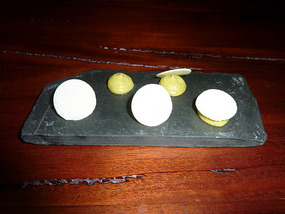
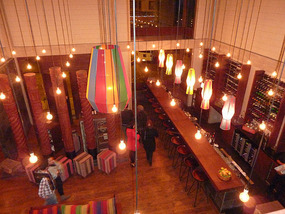
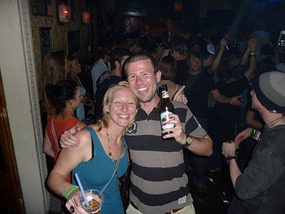
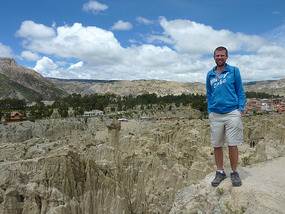
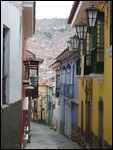



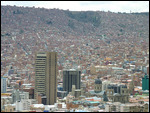
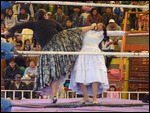
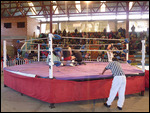
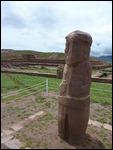
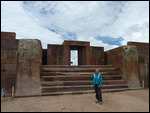
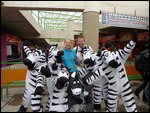
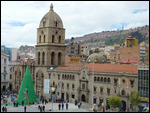
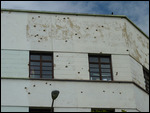
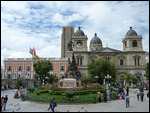
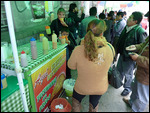
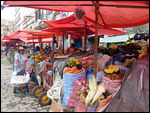
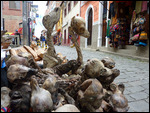
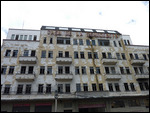
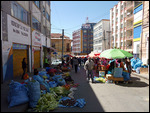
2025-05-23